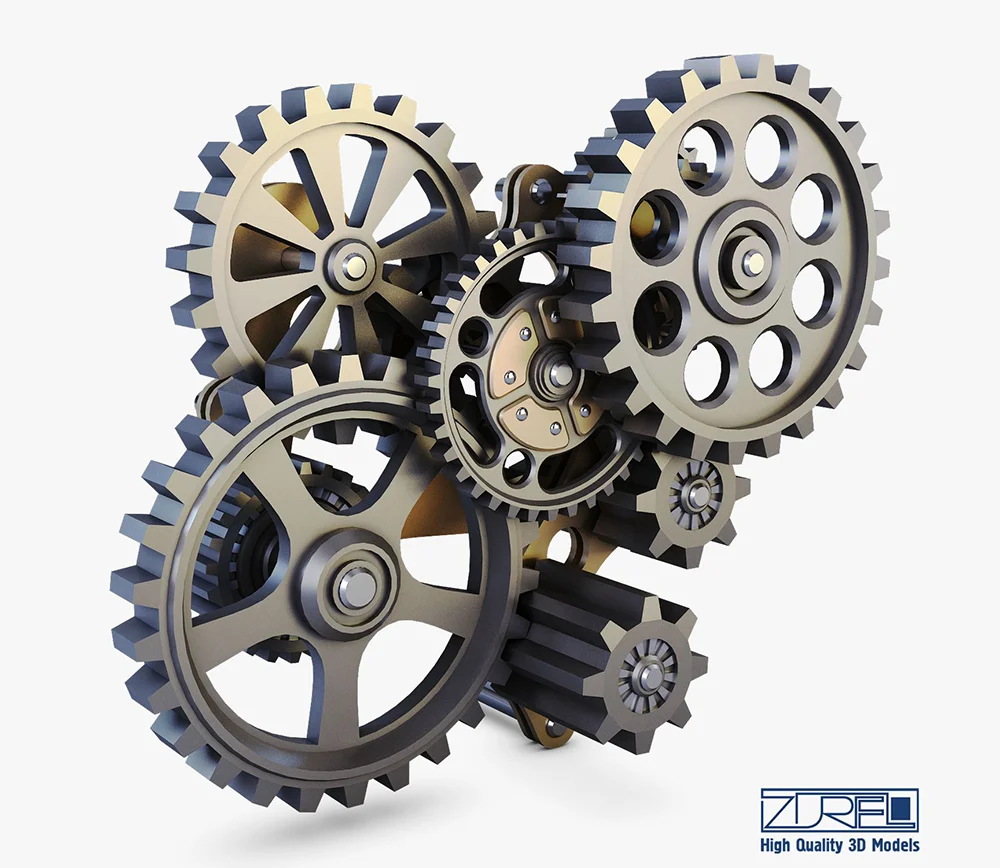- This topic is empty.
-
AuthorPosts
-
28/03/2025 at 14:06 #82083
Rail transportation is a crucial component of modern infrastructure, facilitating the efficient movement of goods and passengers across vast distances. One of the fundamental elements ensuring the reliability and performance of rail systems is the gear wheel. The durability of rail transportation gear wheels plays a pivotal role in improving operational efficiency, reducing maintenance costs, and enhancing safety. In this blog post, as a high load industrial gear manufacturer, Longruifa will share the performance advantages of durable rail transportation gear wheel for sale.
Durable Rail Transportation Gear Wheel Performance Advantages
1. Enhanced Load-Bearing Capacity
Rail transportation gear wheels are subjected to extreme mechanical loads due to the weight of trains, acceleration and deceleration forces, and dynamic track interactions. Durable gear wheels are engineered from high-strength alloys and specialized composites to withstand these demanding conditions. Advanced manufacturing techniques, such as case-hardening and shot-peening, improve surface strength and resistance to fatigue, allowing these wheels to endure higher stress levels without premature failure.
The increased load-bearing capacity translates into better performance under heavy freight operations, reducing the likelihood of deformations and breakages. This capability is crucial for locomotives and freight trains that transport bulk commodities over long distances.
2. Extended Service Life and Reduced Maintenance
Durable rail transportation gear wheels exhibit superior wear resistance, leading to an extended operational lifespan. This durability is achieved through advanced metallurgy, precision heat treatment, and optimized gear tooth geometries that reduce friction and stress concentrations.
With a longer service life, rail operators benefit from reduced downtime and lower maintenance costs. Frequent gear replacements and servicing can be expensive and disrupt railway schedules. By employing robust gear wheels, railway companies can optimize operational efficiency and allocate resources to other critical maintenance areas.
3. Improved Energy Efficiency
Energy efficiency is a vital concern in railway operations, especially in electrified and high-speed rail networks. Durable gear wheels contribute to energy savings by minimizing frictional losses and ensuring smooth power transmission. The precise machining and advanced lubrication systems used in high-quality gear wheels reduce rolling resistance, enabling locomotives to operate more efficiently with less energy consumption.
Additionally, optimized gear designs, such as helical and hypoid gears, enhance torque transmission efficiency, reducing energy wastage. This advantage is particularly beneficial in electric and hybrid rail systems where maximizing energy use is a priority.
4. Superior Heat Resistance and Thermal Stability
Rail transportation gear wheels generate significant heat due to friction and continuous mechanical stress. Durable gear wheels are designed with materials that offer excellent thermal stability, preventing excessive expansion, deformation, or failure at high temperatures.
Heat-treated steel alloys, ceramic coatings, and advanced lubricants help manage thermal loads, ensuring consistent performance under varying environmental conditions. Enhanced heat resistance is crucial in high-speed rail applications and mountainous terrain where braking and acceleration cycles generate substantial thermal energy.

5. Enhanced Noise and Vibration Control
Rail gear wheels play a critical role in reducing noise and vibrations during train operations. Poorly designed or worn-out gears can cause excessive noise pollution and vibrations, leading to passenger discomfort and potential structural damage to railway components.
Durable gear wheels, manufactured with precision and high-quality materials, offer smoother meshing characteristics, reducing gear chatter and minimizing vibration-induced stress. Innovations such as precision-ground gear teeth, polymer-based dampening coatings, and optimized gear profiles contribute to quieter and smoother train operations, particularly in urban transit systems and high-speed rail networks.
6. Resistance to Corrosion and Environmental Factors
Railway operations often expose gear wheels to harsh environmental conditions, including moisture, dirt, and corrosive agents such as salt in coastal regions. Corrosion-resistant materials and protective surface treatments, such as galvanization and advanced coatings, enhance the longevity and reliability of gear wheels.
Durable gear wheels engineered with corrosion-resistant properties require less frequent maintenance, making them ideal for long-term deployment in demanding environments. This resistance ensures uninterrupted service and prevents unexpected failures due to material degradation.
7. Compatibility with Advanced Drive Systems
Modern railway systems are increasingly incorporating advanced traction drive systems, including electric and hybrid propulsion technologies. Durable rail transportation gear wheels are designed to integrate seamlessly with these sophisticated drive systems, ensuring efficient power transfer and adaptability to different propulsion methods.
Innovative gear wheel designs support high-speed train applications, regenerative braking systems, and energy recovery mechanisms, further improving overall railway performance and sustainability. The ability to operate efficiently with advanced transmission systems ensures that durable gear wheels remain relevant in the evolving landscape of rail transportation technology.
8. Cost-Effectiveness and Economic Benefits
Investing in durable rail transportation gear wheels provides long-term economic benefits. Although high-quality gear wheels may have a higher initial cost, their extended lifespan, reduced maintenance requirements, and improved operational efficiency result in significant cost savings over time.
By minimizing downtime, optimizing fuel and energy consumption, and reducing repair expenses, railway operators can achieve better financial performance and sustainability. The cost-effectiveness of durable gear wheels is particularly valuable in freight transport, where equipment reliability directly impacts supply chain efficiency and profitability.
Conclusion
Durable rail transportation gear wheels offer a multitude of performance advantages, ranging from enhanced load-bearing capacity and extended service life to improved energy efficiency and noise reduction. Their resistance to heat, corrosion, and environmental stressors makes them indispensable for modern railway operations.
As rail networks continue to expand and technological advancements reshape the industry, the demand for high-performance gear wheels will remain crucial. Investing in durable and advanced gear wheel designs ensures greater operational efficiency, cost savings, and sustainability in the long run, ultimately contributing to the future success of rail transportation systems worldwide.
http://www.lrfgears.com
Longruifa -
AuthorPosts
- You must be logged in to reply to this topic.


